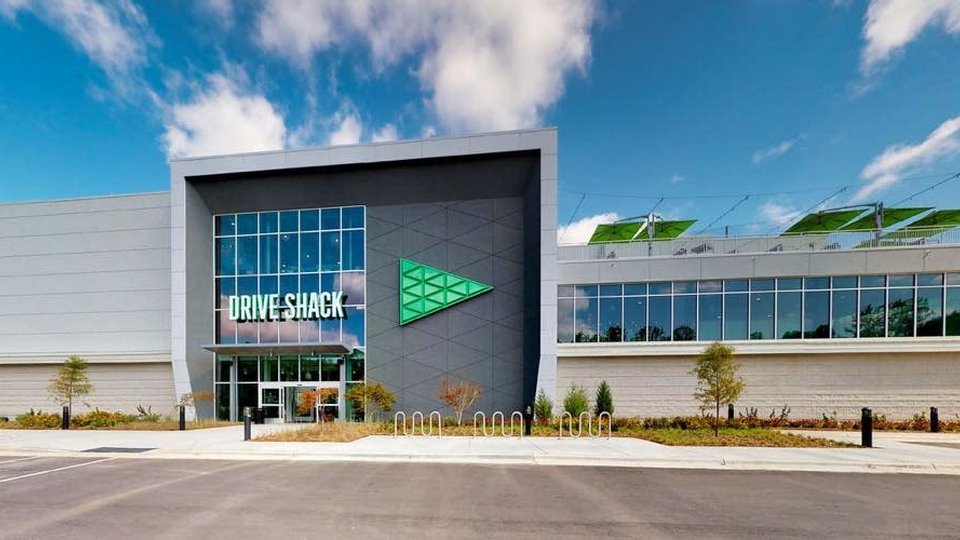Commentary
Mini-golf explodes as a social entertainment platform
Gamified miniature golf has taken center stage in the social entertainment sector.

August 2, 2021 by Kevin Williams
The social entertainment sector, what some have dubbed the "food-n-fun" scene, is seeing an explosion in interest coming out of the impacts from the global health crisis. Much of this interest is a continuation of mounting investment that was made in 2019, before the great lockdown. Such interests are now reignited, and with greater emphasis to address the growing thirst from facility owners, operators and the public, for all things to do with entertainment.
The explosion in interest in mini-golf as a vehicle towards creating an entertainment environment supported by food and beverages has been bubbling in the background of the social entertainment revolution.
Long before the global health crisis, several entertainment start-ups looked at factoring a mini-golf concept into their lineup of branded entertainment. As the market re-emerges, we have seen an increased investment in this approach, and what looks like a land grab and development war to own the high ground.
"Miniature golf," "mini golf" and "crazy-golf" are all derivations from the same concept of a short putting golf game, either around reduced greens or through animatronic and miniature village hazards. The concept traces its history back to 1916, and its first flush of popularity in the 1950s with the Putt-Putt brand.
In the 1970s the concept invigorated, fielded by indoor and dark-light establishments. And even a brief flirtation with "urban golf."
Social entertainment drives leisure
But it has been the explosion in social entertainment, and the application of a much younger adults social networking vibe, married to the latest deployment of hospitality and entertainment infrastructure, that has seen mini-golf propelled to the ascendant.
One of the key influencers has been Topgolf. Acquired by Callaway Golf in 2020, the over-50 facility chain operation started to deploy mini-golf installations as a secondary entertainment, vertical to the main social shooting range format.
The operation is known for its addition of gamification to the golf shooting range — the tracked balls allowing for the experience of shooting balls into targets to become a socially inclusive game, without the sometimes overbearing golf traditions. As seen with social entertainment development across the sector, adding a fun game element to traditional entertainment (gamifying) offers these entertainments a new lease of life and a chance to be rolled into a food and beverage offering.
The more than 60 Topgolf Swing Suite venues offer a food and beverage environment with a digital sports experience, marking the inclusion of a mini-golf putting course to the existing Topgolf locations under the name of "Putt Hut."
Mini-golf concept expands
The brothers behind Topgolf have gone on to evolve the mini-golf approach. Through their new operation, State of Play, the tracked golf balls have ventured into one of the most discussed of the emerging next-gen mini-golf concepts, with Puttshack.
The first iteration opened in London in 2018 and plans to open its fourth U.S. site in 2023 at a location in the Gulch, a neighborhood in Nashville. The concept has seen the deployment of immersive technology with regards to ball tracking and a scoring element added to the mini-golf experience.
The company also revealed a $60 million fund from U.K.- and U.S.-based investors to fuel a U.S. rollout, with the first Atlanta site being followed, in the fall, by Chicago and then Miami venues.
Another developer grasping this opportunity, Creative Works, revealed in 2019 its Lucky Putt mini-golf course, which applied gamification technology with tracked balls and animated courses. It also employs touchscreens and special course-based sensors, as well as the player ball personalization kiosk.
Bowling operation Sun Valley Lanes recently installed the Lucky Putt system in its refurbished Nebraska venue, a decision made following the facility owners' visit to the Creative Works Amusement 360 Event in 2019, one of seven locations that adopted a gamified approach.
Golf entertainment facilities emerge
Several manufacturers are working on interpretations of gamifying mini-golf with digital technology. What some have dubbed "golf entertainment facilities" are the new opportunity as standalone venues.
The battleground of offering the next chain concept for social entertainment in a mini-golf package has seen Topgolf competitor Drive Shack throw its hat into the ring, initially with investment in its Urban Box locations. Having opened, to date, four sites, these tech-enhanced mini-golf venues are targeting urban locations usually in the 25,000-square-foot range.
Drive Shack secured technology for ball tracking and automatic scoring and married this to a dedicated food and beverage offering to encourage social engagement.
Along with a "Generation 2.0. Drive Shack" business model, with new tech and improved space utilization, the company has also planned to open 50 facilities by the end of 2023.
Drive Shack announced this year the rebranding of its concept under the name Puttery, which also saw the signing of an agreement for a 20,000-squeare-foot venue opening in Penn Quarter, Washington D.C, aiming for an extensive rollout with two venues this year and 17 by 2022.
A branded trademark
Meanwhile, Funlab, an Australian operator with bowling and LBE facilities, has gone as far as acquiring the global trademark on the brand "Holey Moley," even licensing it to ABC/Disney and Channel7 Australia.
The "Holey Moley" uses an offline, no-screen approach, offering an irreverent fun mini-golf concept for guests. The company has developed over 150 holes that are rotated through the chains, keeping the experience fresh for the players.
Not all the new investment is for indoor venues.
PopStroke, 50% owned by Tiger Woods through his operation TGR Design, recently opened its flagship location in Florida.
The 36-hole miniature putting experience is designed to offer a skew on synthetic turf and employing technology-based enhancements through the company's patented "iPutt" Bluetooth ball tracking platform.
The technology in ball tracking and gamified activity are also being combined into other adaptations ranging from tracked soft-nose darts and shuffleboard, as well as some new interpretations of fun, social game experiences.
This aspect of the business seems ripe for innovation, and several other well-known amusement and attraction development studios are rumored to be working on their own mini-golf game concepts for rollout later in the year.
This would seem to mark a moment where mini-golf explodes as a new social entertainment platform on the international scene.
(Editor's note: Extracts from this blog are from recent coverage in The Stinger Report, published by KWP and its director, Kevin Williams, the leading interactive out-of-home entertainment news service covering the immersive frontier and beyond.)
About Kevin Williams
Along with advisory positions with other entrants into the market he is founder and publisher of the Stinger Report, “a-must-read” e-zine for those working or investing in the amusement, attractions and entertainment industry. He is a prolific writer and provides regular news columns for main trade publications. He also travels the globe as a keynote speaker, moderator and panelist at numerous industry conferences and events. Author of “The Out-of-Home Immersive Entertainment Frontier: Expanding Interactive Boundaries in Leisure Facilities,” the only book on this aspect of the market, with the second edition scheduled for a 2023 release.







